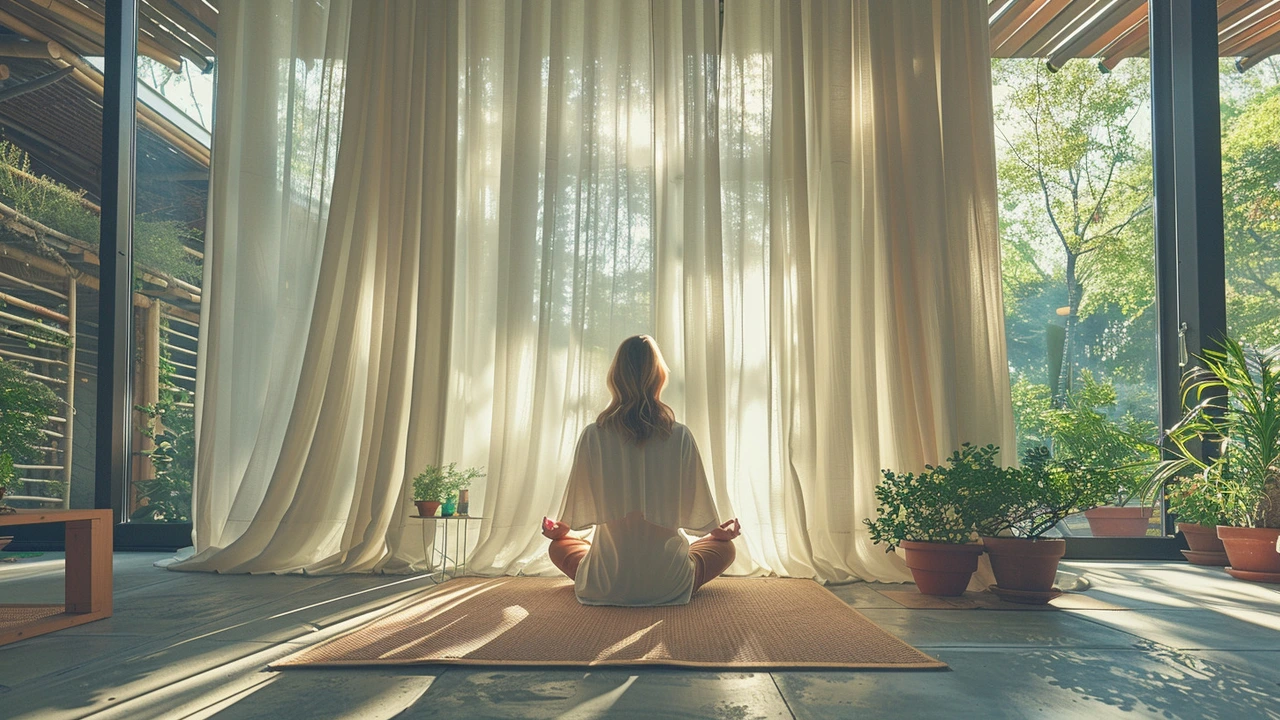
Understanding Abhyanga: The Sacred Art of Self-Massage
At the heart of Ayurveda, the ancient Indian system of natural healing, lies Abhyanga—a deep, nurturing, and detoxifying oil massage. This technique is far more than a simple body massage; it is a holistic tradition that integrates physical wellness with spiritual serenity. While the practice dates back thousands of years, it's becoming increasingly relevant in today's fast-paced world where self-care is often overlooked.
Abhyanga involves the generous application of warm, natural oils all over the body, with gentle massaging strokes that go beyond skin deep to penetrate the tissues. This self-massage technique not only soothes the physical body but also calms the mind, promoting a serene state ideal for meditation. The oils used are typically infused with herbs tailored to balance the three doshas (constitution types in Ayurveda) - Vata, Pitta, and Kapha, adding another layer of personalization and therapeutic benefit to the practice.
The Science Behind Abhyanga's Healing Powers
Scientific studies on Abhyanga reveal its numerous health benefits, ranging from improved circulation and lymphatic drainage to enhanced skin health and stress reduction. One study highlights how regular abhyanga can significantly lower heart rate and blood pressure, illustrating its potential in preventing cardiovascular diseases. Another interesting aspect is its impact on the levels of stress hormones in the body; practicing abhyanga can lead to a noticeable reduction in cortisol levels, thus alleviating stress and anxiety.
"The practice of daily self-massage...can help to manage stress and enhance general health." - A study from the National Institutes of Health.
The oils play a crucial role in the efficacy of Abhyanga. They are believed to penetrate through the minute channels in the body, lubricating, healing, and nourishing the inner tissues. This process aids in the removal of toxins from the body, promoting internal purity and improving vitality and energy levels—crucial factors for those looking to deepen their meditation practice.
Selecting the Right Oils for Your Constitution
Different oils offer different benefits and are recommended based on one's dosha. For instance, sesame oil, known for its warming properties, is ideal for those with a predominant Vata constitution. It helps in grounding excess air and space elements, thereby reducing anxiety and promoting calmness. Coconut oil, with its cooling qualities, is perfect for balancing Pitta, while individuals with a Kapha constitution might find sunflower or mustard oils, which have lighter and heating properties, to be more beneficial.
Herb-infused oils further enhance the therapeutic properties of Abhyanga. For example, adding Brahmi (Bacopa monnieri) to the massage oil can boost cognitive functions and support mental clarity, making it an excellent choice for meditators. Similarly, Ashwagandha (Withania somnifera) is known for its stress-relieving properties and can be a valuable addition for those dealing with anxiety or sleep difficulty.
Step-by-Step Guide to Performing Abhyanga
Performing Abhyanga is a simple yet profoundly beneficial routine. Start with warming your chosen oil in a bowl of hot water. Begin the massage at the head, using circular motions on the scalp, which is a key area for releasing tension. Slowly work your way down to the feet, covering all body parts with long strokes on the limbs and circular strokes on the joints. Pay special attention to the ears, fingers, and toes, as these areas contain vital marma points, similar to acupressure points, which when stimulated can boost energy flow and rejuvenation.
It is recommended to leave the oil on the body for at least 20 minutes after the massage to allow maximum absorption. Following this, a warm bath or shower can help to remove excess oil, leaving the skin feeling soft and nourished.
Integrating Abhyanga into Your Daily Meditation Practice
Incorporating Abhyanga into your meditation routine can transform your experience. The soothing effect of the massage prepares the body for stillness, making it easier to sit in meditation without physical discomfort. Moreover, the calming effect on the mind facilitates a deeper, more focused meditative state. Starting your day with Abhyanga can set a serene tone for the day ahead, enhancing mindfulness and presence throughout the day.
Evening Abhyanga can serve as a powerful tool in establishing a restful, healing sleep pattern, thereby supporting overall well-being and mental clarity. This is particularly valuable for those who find their minds too active or stressed to meditate effectively.
Conclusion: A Journey to Improved Well-Being through Abhyanga
Abhyanga is more than just a self-massage technique; it's a journey towards balanced well-being, integrating physical, mental, and spiritual health. This ancient practice harmonizes perfectly with meditation, enhancing the experience and benefits of both. By adopting Abhyanga as part of a daily wellness routine, one can achieve a deeper sense of calm, increased vitality, and a more profound connection to self.
Regardless of your experience level with meditation or Ayurveda, Abhyanga can be a simple yet powerful addition to your self-care arsenal, promising relaxation, rejuvenation, and a deeper meditative practice. So, I encourage you to embrace this nurturing tradition, explore the oils and techniques that resonate with you, and discover the transformative impact it can have on your meditation and overall wellness.
Write a comment